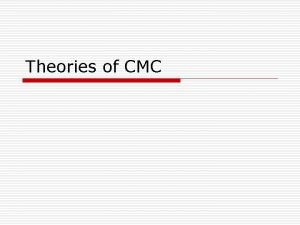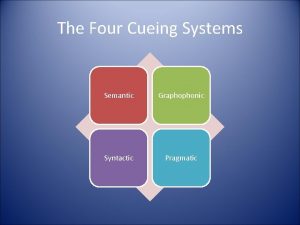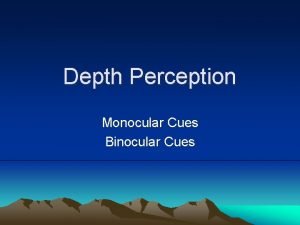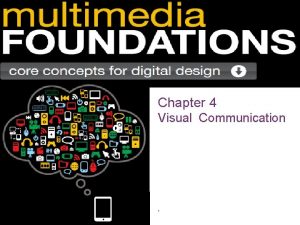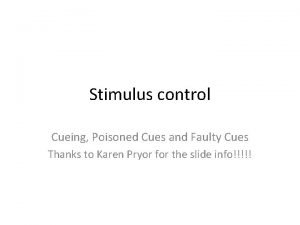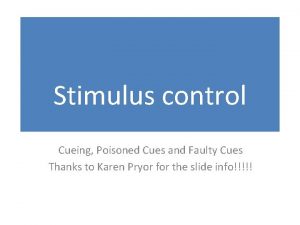COM 495 Visual Communication Chapter 2 Visual Cues








- Slides: 8

COM 495: Visual Communication Chapter 2: Visual Cues Friday Lab Sections October 7, 2011

Goals for the Day Reviewing Chapter 2: Visual Cues n Visual Cues Sampler & In. Design Workshop n Next Week n

Chapter 2 Review: Key Ideas n n n Brain researchers have found “that the brain, through its vast array of specialized cells, most quickly and easily responds to four major attributes of ALL viewed objects: color, form, depth, and movement” (p. 16). These CUES are precognitive and attract attention. Understanding of what the cues are and how they function helps expand our visual literacy.

Chapter 2 Review: Key Ideas Visual Cues COLOR n. The “eye sees” three primary colors: red, green, blue (trichromatic theory). n. Additive vs. Subtractive Color? n. Dots-demand attention! n. Lines-horizontal, vertical, diagonal, curved (do what to the eye? ) n. Shapes- “define the outside edges of objects” (p. 27). Parallelograms n. Circles n. Triangles n n. Methods of Describing Color: Objective n. Comparative n. Subjective n DEPTH FORM n. What does each shape symbolize? § Human binocular vision allows for 3 D-width, length, and DEPTH. n 8 Factors that influence Depth. Space (proximity) n. Size (known/unknown) n. Color (warm/cool) n. Lighting (brightness/shadows) n. Textual Gradients n. Interposition n. Time (viewer’s attention) n. Perspective (illusionary, geometric, conceptual) n MOVEMENT ØWhy is movement a visual trigger? Ø 4 Types Real Ø Apparent Ø “Persistence of vision” ØSeries/sequence Ø Graphic Ø “Directing” the eyes with? Ø Implied Ø Visual vibrations Ø

Chapter 2 Review: Key Ideas “An important lesson for image producers who want to make memorable messages is to understand that brain cells are complex ‘difference detectors. ’ They are stimulated more by the relative differences between visual elements than by the intensity of each one” (p. 43). What does this statement mean?

Visual Cues Sampler n Questions about the assignment?

In. Design Workshop n n Pair Up! Open Visual Cues Sampler Template

For Tuesday Reading: Chapter 3 Visual Theories







